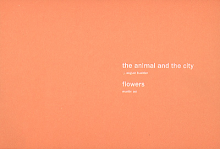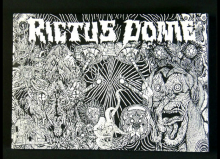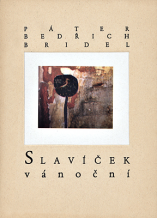| Revista Umělec 2001/3 >> The Monosodium Effect | Lista de todas las ediciones | ||||||||||||
|
|||||||||||||
The Monosodium EffectRevista Umělec 2001/301.03.2001 Keiko Sei | Perfil | en cs |
|||||||||||||
|
"From MSG to Zen
July 25, 1908 is an historic day. Unaware of the consequences, Professor Kikunae Ikeda of Tokyo University is patenting his method of manufacturing Glutamic acid. He has discovered the secret of “the fifth taste,” or umami (deliciousness), and extracted it from the Kombu seaweed that his wife brings home from the market. In fact, Ikeda also goes on to discover a way to mass produce it — giving rise to the first artificial glutamic acid relish, Ajinomoto, or the essence of taste. Today the chemical is known as Monosodium Glutamate, MSG, the purpose of which is to enhance the “original” taste of natural foods. “Enhancing the original taste of nature” has been a Japanese obsession since the dawn of culture. Japanese gardens, poetry, art, music, flowe rsarrangement and food are all testaments to the magic of cultural enhancement. You are not cultured if you merely look at nature; you must write Haiku poetry about it within the strict 5-7-5 syllabic form. You are not cultured if you only listen to the sound of the wind; you must make and hang a bell to enhance the sound. You are not cultured if you simply listen to the sound of water; you must accentuate it with a Shishiodoshi in order to “invoke an image of cool freshness.”1 To explain this Japanese attitude is like scanning a thesaurus for the word “enhance”: It’s the desire to augment, manifest, emphasize, exaggerate, improve, aggravate and decorate nature. And so along came MSG. When I was a child, Japanese mothers used it in almost every dish they cooked, from miso soup to salads, until the 1970s, when the rumor began to spread that excessive use caused brain damage. Japanese mothers started to use less of it and exports to other Asian countries increased. Now the Chinese are the most avid consumers of the chemical. If the Japanese add a dash, the Chinese throw in a scoop — in almost every dish. Because the Chinese also regard culture as artifice and believe it necessary to intervene in nature, they had no reason to resist the principle behind MSG. Nonetheless, the Japanese conquest of 3000 years of Chinese culinary culture was unabashedly audacious. Today Vietnamese, Philippians and Thai also enjoy MSG’s power to enhance. Thus was Japanese imperialism achieved in Asia. It was an imperialism of culture as well as economy (“globalization”). But, of course, it didn’t end in Asia. The majority of processed foods sold around the world use MSG, creating a billion-dollar industry. And the presence of MSG in our food is so far-reaching that it may be too late to return all the way to the zero-point: it’s use has developed side by side with the history of processed foods. MSG is confusingly labeled under various names and is even sprayed on growing fruits, grains and vegetables to improve growth, so the chances are that we are eating huge quantities of MSG without even knowing it. The symptoms of MSG sensitivity include headaches, migraines, upset stomach, vomiting, diarrhea, shortness of breath, panic attacks, partial paralysis, mental confusion, mood swings, mouth lesions and depression. But the dangers are not limited to physical and mental health. Earlier this year, Indonesia’s Health Ministry ordered Ajinomoto to withdraw all its products containing MSG from the country because pig enzymes are used in manufacturing MSG, which is against Muslim law. This controversy is hence an overtly cultural one. The interesting aspect of MSG, however, is the “cultural” implication that lies in the function of the relish: “enhancing” the original taste of food. In other words, it works by “waking up” the taste — as if the “original” taste had been sleeping! A defender of MSG would thus claim that they are helping to “wake up” the taste of food that would otherwise remain sweetly dormant. Does this mean that the most effective cultural imperialism today is helping the culture of the world — with its hidden sleeping talent and beauty — to wake up? There is also the issue of the original and the copy, what is artificial and what is natural. This kind of dichotomy, as is now commonly known, has no place in Asian thinking. Thanks to the popularity of Zen gardens, the notion of “every element is the whole, and is whole in itself” is now familiar in the West. And with the popularity of Anime and other techno culture, it has become easier for the Japanese to explain to Westerners that, in Japanese thinking, technology does not stand in opposition to nature. It is a consequence of nature’s activity and represents a single element in the whole of the universe. Moreover, thanks to digital and cloning technology, the whole concept of the original and the copy is currently being re-examined in the West. A welcome phenomenon in Japan, where the notion original vs. copy has never been terribly popular. All of which makes the current boom of Japanese culture in the West highly significant. Japanese culture, which has progressed by copying and absorbing other cultures before Japanizing them, is now being copied in the West, through the simple method of “cut-and-paste.” This is, without a doubt, cultural globalization. Dandyism If we take cultural globalization for granted, and if we want to look at one of its more pleasing aspects, I would suggest inspecting its effect in the world of “dandyism.” In the Japanese dictionary, the word “dandyism” is associated with “Haikara” (high-collar), describing somebody who likes to borrow fashion from the West, evoking this symbol of Western fashion. Yet even in the West, dandyism carries the nuance of a male lifestyle so devoted to smartness and fashion that nothing new or alien can cause fear or consternation. Dandyism worships style over everything else in the world, even God. Dandies might look like nihilists or atheists, yet their belief lies solely in style. Whatever the basic definition may be, dandyism never fails to generate variety, always absorbing the atmosphere of the era. We have seen the fin-de-siecle dandyism of Baudelaire, Mallarme, Proust and Wilde, the Deco dandyism of Coward and Fitzgerald2, the glam-rock dandyism of Bowie and Ferry, the post-modern dandyism of Barthes and Derrida, and now we are witnessing the emergence of what might be called media dandyism. Media dandyism can be divided into two categories: audiovisual dandyism and data dandyism. Audiovisual dandyism is born out of MTV and the club scene. The post-glam kitsch dandyism of The Artist Formerly Known as Prince, the new female dandyism of kd lang and the styling of rap and hip-hop artists are chief among this group. With reference to the second category, the terms “data dandy” and “digitdandy” were coined by the media theory group Adilkno and refer mostly to activity on the Internet. This type is defined as follows: The data dandy collects information to show off and not to transmit it. He is well, too-well, or even exaggeratedly well-informed. Pointed questions are met with unwanted answers. […] The phenotype of the data dandy is as feared as was his historical predecessor, whose playground was the street and the salon. The elegant extravagance with which he displays the most detailed trivia shocks the practical media user. […] Against this background the data dandy proves what everybody knows: namely, that information may be omnipresent but is not readily accessible.3 It must be noted here that rap and hip-hop artists are data dandies as much as they are audiovisual dandies, especially as they assemble and assort completely different kinds of information derived from multiple locales and cultures. Consequently, they are media dandies in toto. Due to their enormous influence on urban youth, particular genres like “gangsta rap” have caused controversy when some of the artists ended up becoming actual killers. Styled to Kill Two films from the late 1990s successfully captured the media dandyism of rap and hip-hop culture: Ghost Dog: The Way of the Samurai by Jim Jarmusch and Fallen Angels by Wong Kar-Wai. Ghost Dog takes place in an unknown city in America, but the spirit is that of New York, where the whole world is jumbled together. The main character is an African American who is inspired by Japanese culture and lives his life according to the 18th-century essay “Hagakure,” which describes the way of the Samurai. The film is a hybrid of old and new, East and West, high tech and low tech. In fact, it is a 1990’s version of Jean-Pierre Melville’s Le Samourai, which also takes the philosophy of the Samurai as its starting point, and to which the Hong Kong movie Fallen Angels also makes reference. Cultural inspiration and influences in Hong Kong are as diverse as those in New York, yet somewhat more complex. Here the communist Chinese, the colonial British and the colonial Japanese converge in forming a complex transition towards an unpredictable future. Adopted “Western” culture is already that hodgepodge of different cultures seen in Ghost Dog, to the extent that what is dubbed the “original” does not signify what it is supposed to. In other words, the more copying and the more mixture, the more original Hong Kong becomes. Using that framework, Wong Kar-Wai established himself as the most stylish and the most “original” of Hong Kong directors of the 1990s. Making liberal use of video effects, handheld camera, jump cuts, slow motion, extreme wide-angle lenses, neon-colored lighting, and the frequent swapping of color with black and white, his style can be described as post MTV audiovisual dandyism. His range of reference is wide: Haruki Murakami, Manuel Puig, Hong Kong die-hard noir artist John Woo, and Nan Goldin. And the soundscape of Fallen Angels is as complex as the city of Hong Kong itself: arty Laurie Anderson, Karaoke-friendly Asian-sweet pop songs, the weeping flute from spaghetti westerns and, most memorably, the use of a reggae-influenced trip-hop score for the killing scenes — “I’m gonna get you all, Mum, ‘cause I’m cool.”4 Fallen Angels is the story of a professional assassin and his agent who communicate only via fax and pager, and a mute and his lost love who communicate without language. Probably the best moment is when the giant golden arches of a McDonald’s restaurant transform into a purely aesthetic object as the killer stands in the rain in front of them. The golden arches and their red background are perfectly absorbed into the neon light of the Hong Kong night, where millions of immigrants, temporary residents and citizens are all waiting for something or somebody to come, or not to come. At this moment you might ask: Who is afraid of the dichotomy of the original and the copy? Who is really afraid of cultural globalization? The professional killers in both Ghost Dog and Fallen Angels are dandies, as are most of the protagonists in the “noir” genre. They are obsessed with personal style, armaments, cigarettes, drinks, art, music, partners, rituals and even weather. While they try to make their obsessions look as arbitrary as possible, their whole life is determined by style — even their methods of killing and dying. The interesting thing about noir dandyism, however original it may be, is that it always looks like a pastiche of something. This is due to the nature of “style”: that one must always borrow an aesthetic from somewhere else in order to establish one’s own “original” style. The pastiche is so overt in the film noir genre that many directors emphasize it, in homage to the entire history of film, or even in homage to the act of borrowing itself. Godard does it in the guise of a film critic while Tarrantino does it in “film buff” clothes. Wong Kar-Wai’s first feature film, As Tears Go By, is the Hong Kong remake of Scorsese’s Mean Streets. Ghost Dog, in honor of Seijun Suzuki’s 1967 Branded to Kill, appropriates an entire scene. And Branded to Kill is itself based on the English novel Midnight Plus One by Gavin Lyall. Thus the “borrowing” takes place on an increasingly global level, and the more often it occurs the less chance it has of escaping a comical flourish. This comedy of borrowing, copying, mimicking, pastiching, rendering, sampling, blending and mixing different materials to create mismatches is now seen as “cool” and has developed into the dominant culture. The ruling king is the rap culture of hip hop and turntablism, with recent media and net activism — which typically hacks and mimics (corporate websites, etc.) — also assuming a place in this kingdom of cool. Komoróczky: a Dandy? Which brings us to the works and style of the Hungarian artist Tamás Komoróczky, who carries all the joy of pastiche into the arena of the fine arts through his use of references, data and information. One of his latest videos, MAD TOM’S BALLAD (2000), for instance, is about killing. A man chases a woman, captures her, ties her up, tortures her, kills her and dumps her body. Classic video noir. In the video, a woman is pursued by a man into something that looks like an art gallery space. We then see Komoróczky filming himself, alone, in the space, where he acts out all the violence of the chase scene, which will ultimately be included in the video after post-production editing. My Heart Is Gun I-II (1999) suggestively opens with the kind of logo you might find in the collection of videos on your shelves at home. But the video simply portrays two Hungarian policemen (one of them played by Komoróczky) rapping around town with a ghetto blaster, DJing. The style is pure music video, yet, as the logo suggests, it’s supposed to be a film. But, since it is shown in art galleries, is it not, in fact, art? The same goes for MONUMENT or a Bit of Masturbation (1998), which shows Komoróczky singing karaoke to George Michael’s sickly sweet love song over video-karaoke English lyrics. It’s not “real” or “authentic” karaoke, since we hear Michael’s original singing as well. Wallpaper visual effects are superimposed over Komoróczky’s body as he croons. The result is so intentionally cheap and so much like a home video that it’s essentially alien to the world of art. Nevertheless it is supposed to be art because it is only shown in art spaces. To the Heaven str. 7 /There is Milk Today (1997) is a music video of a mysterious religious sect that looks as if it might come from India or somewhere else in the Far East. A group of people, including the omnipresent Komoróczky, sings a song wearing white costumes. That’s all. It is yet another completely non-functional video. Religious conversion is out of the question, one way or another (the group looks too unenthusiastic), and it is far too uninteresting to stand alone as a music video. As far as the art crowd goes... well, who knows what they make of it. Nevertheless, these videos serve a purpose precisely because of their non-function nature. This is also true of Komoróczky’s wallpaper series. In the video Then Nothing Else But the Buzzing of the Bees (2000), he just displays smooth pixel images, digital photos taken from websites. Each picture looks as if it existed for no other reason than to become wallpaper design. Corporate showroom/elevator muzak plays through these images — jazzy, fusion, urban. Mixed in is a man’s comment on reggae music, the use of reggae formulae in lyrics: “like rock music, we sing a song about love, girls I love you, boys why you treat me bad...” The visual patterns superimposed on the singing images in MONUMENT include the mass-produced image of a Warhol woman’s face with hints of contemporary ad design. It might be said that Komoróczky’s works are a direct comment on the art scene, which, in turn, is a comment on mass media, which appropriates modern and contemporary art, which is influenced by mass media. This is the endless hula-hooping to which Komoróczky swings his hips, and he never drops a thing. In fact, Komoróczky’s work always plays with its materials and pokes fun at them. It is as if he were wearing an enormous pair of “surface slippers”5, sliding over the ice reflecting the visual “faces” of a city: posters and billboards, video karaoke, MTV, mannequin dolls and mannequin humans. Some might call these reflected faces on ice “image,” but Komoróczky calls them “alibi”: alibi fashion, alibi sports, alibi records which are released by the House of Alibi, My Heart Is Gun released by alibi cinema, alibi life, alibi 2000. Indeed his works are full of alibis. Visual image is alibi, music is alibi, and the text is alibi. In order to make this legitimate, Komoróczky uses Japanese texts as a visual design element. They are truly alibi, as the Japanese expressions, and oftentimes the words themselves, are completely muddled. It’s so bad that at first I wondered if an online translator had done the job. It turned out that they were translated by a human — a Japanese — so perhaps the absurd translation was done on purpose. Yet, in the end, it really doesn’t matter if it was intentional or not. Ultimately Komoróczky is simply depicting the environment of urban life today. The use of incorrect Japanese also serves Komoróczky’s purpose as a “surface slipper”: the shallow slide between languages generates a new, third meaning, which, dialectically, means nothing. Hence alibi, for Komoróczky, seems to mean image without substance. Finally, the linguistic slippage he incorporates in his work mirrors the way bad English is used as a design element in many Asian cultures. The English used on Japanese and Chinese products is so funny and peculiar that it often constitutes art in itself (e.g. “Internet & Coffee CU. Let’s create our Dreams with coffee, by enjoying coffee”). Linguistic experience could well be the determining factor for much of the peculiar sensitivity of Hungarian artists, who speak no Indo-European language, but a tongue of the unique Finno-Ugric language group. Theirs echoes the daily experience of Asians when confronted by the English language. Listening to British rock music, watching Hollywood movies, dancing to gangsta rap, singing “Hotel California” karaoke, English passes through their ears almost as sound without meaning. But now that we are so inundated by the English language in media and urban life, we must constantly tune our minds to translation mode. This “translation mode” has become our constant mindset. So Komoróczky’s wallpaper Dadaism is an accurate representation of the mindscape of billions of non-Europeans. The Hungarian cops’ rap in My Heart Is Gun is in Hungarian — completely incomprehensible to almost anyone non-Hungarian. Hungarian is probably one of the few European languages whose word for police does not start with the letter “P” (Rendörség!), though Komoróczky shows the English word “Police” often in the video. After all, young kids worldwide love American and British rap, without understanding a single word being sung. Why not Hungarian? Alibi Dandy To create apparently non-functional, purposeless music and images is a far more difficult task than it might seem. Komoróczky carefully mixes copy-like harmless designs with his own “original” purposeless pictures (a hip-hopster lying with stuffed animals in a garden, a religious-sect type dancing with garden dolls and so on). His blend of cheap, vulgar, off-key, amateurish pictures and music with corporate, mass-produced images and music is scrupulously arranged. This can be seen particularly in the video Site Transitoire (1998), which consists only of Atari-cheap computer images, and whose image composition generates only a subtle laugh. Yet we do not know exactly where this laugh comes from. It takes an immeasurable sense of humor to make such a funny video with so little substance. I therefore regard Komoróczky as a hardworking wallpaper-maker, with a sublime sense of humor. He does it all while appearing as arbitrary as possible. Does this make him a dandy? No doubt Komoróczky himself wants to be something different. Let us read what he says in his catalogue: [...] The quickly multiplying roles to be performed on the stage are socially more and more tolerated, and — we seem to suspect what we know — they are constructions of the media which are no longer about flesh-and-blood personalities, but rather sophisticated, apportioned samples of representation that can be easily identified with, worshipped, criticized, at the end, deconstructed and afterwards, re-mixed. A game for everybody: erect a monument for yourself, and for somebody who’s different or not different yet different?6 If he could, he would probably accept the role of alibi dandy, to allow his image to be more easily copied, deconstructed and re-mixed. “I’m gonna get you all, Mum, ‘cause I’m cool...” This is not about killing. He is really singing, “I’m gonna copy you all, Mum...” Notes: 1. TREND Dictionary of Things Japanese, Shogakukan Publishing, 1999. 2. For more on deco dandyism and dandyism in general see Christian Chensvald’s article in Retro, www.retroactive. com/mar98 3. Der Datendandy, Bensheim: Bollmann Verlag, 1994. 4. Original scores written by Hong Kong-based songwriters Roel A. Garcia and Frankie Chan. 5. Cf. Alain Robbe-Grillet’s cine-roman (1974) Glissements progresifs du plaisir (Accelerative Slippages of Pleasure). 6. Catalogue: Protection Asylum, City Gallery, Szombathely (H), 2000. This is a shortened version of the text written for the Hungarian Pavilion on the occasion of the 49th Venice Biennale. "
01.03.2001
Artículos recomendados
|
|||||||||||||
|
04.02.2020 10:17
Letošní 50. ročník Art Basel přilákal celkem 93 000 návštěvníků a sběratelů z 80 zemí světa. 290 prémiových galerií představilo umělecká díla od počátku 20. století až po současnost. Hlavní sektor přehlídky, tradičně v prvním patře výstavního prostoru, představil 232 předních galerií z celého světa nabízející umění nejvyšší kvality. Veletrh ukázal vzestupný trend prodeje prostřednictvím galerií jak soukromým sbírkám, tak i institucím. Kromě hlavního veletrhu stály za návštěvu i ty přidružené: Volta, Liste a Photo Basel, k tomu doprovodné programy a výstavy v místních institucích, které kvalitou daleko přesahují hranice města tj. Kunsthalle Basel, Kunstmuseum, Tinguely muzeum nebo Fondation Beyeler.
|






































 We Are Rising National Gallery For You! Go to Kyjov by Krásná Lípa no.37.
We Are Rising National Gallery For You! Go to Kyjov by Krásná Lípa no.37.
Comentarios
Actualmente no hay comentariosAgregar nuevo comentario